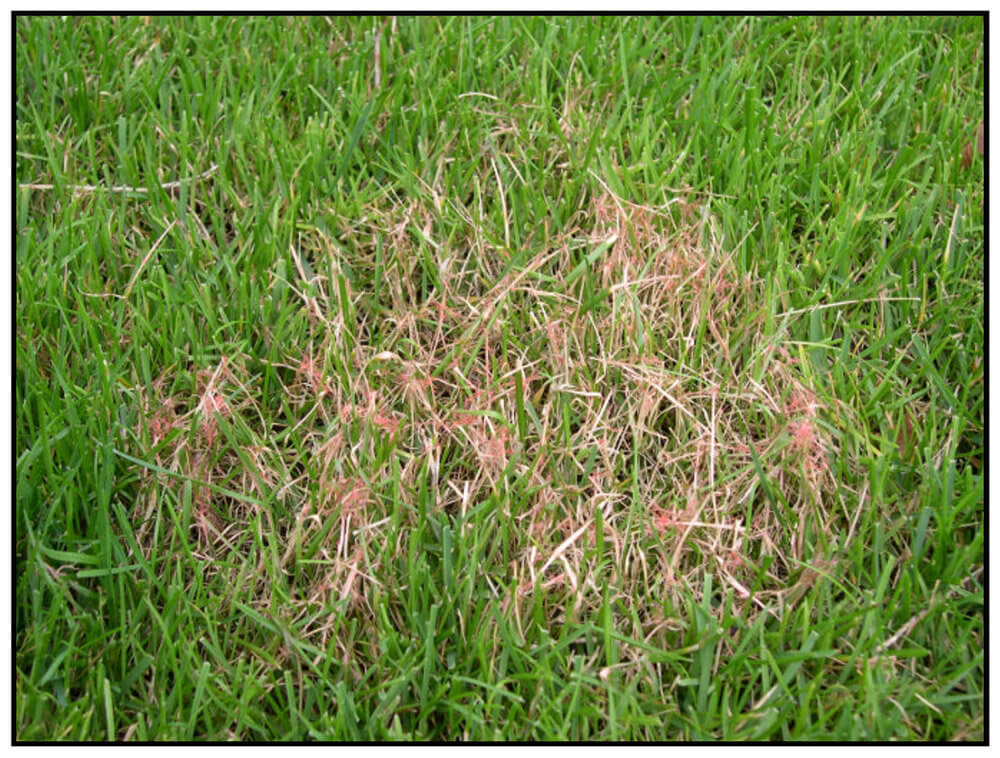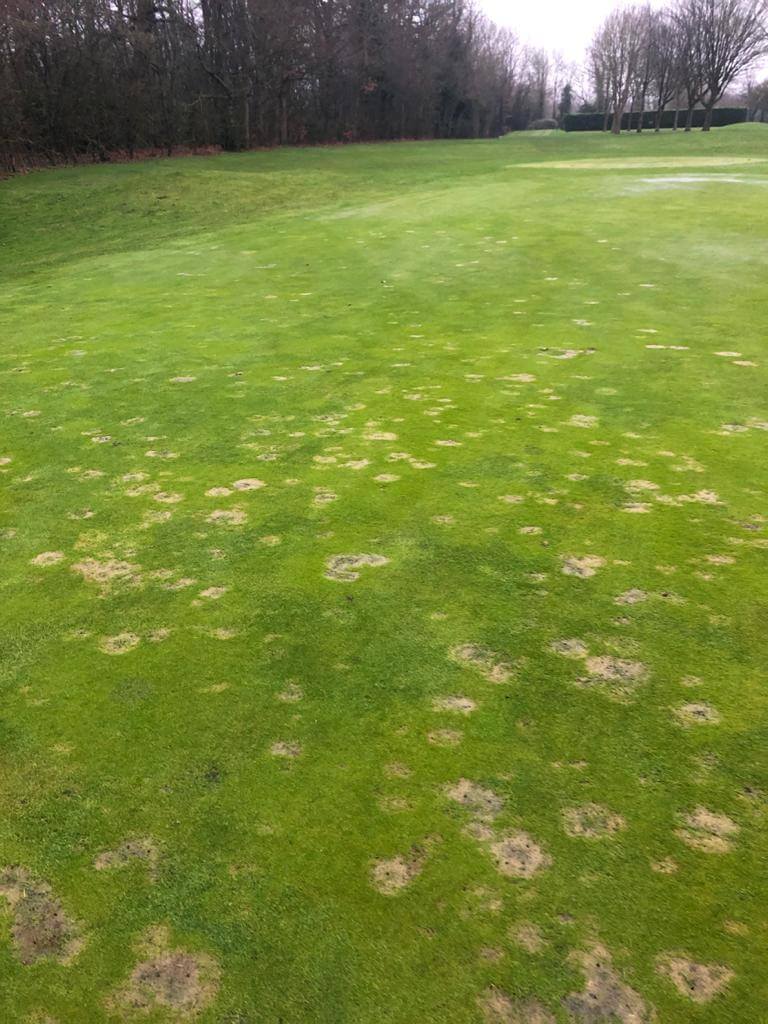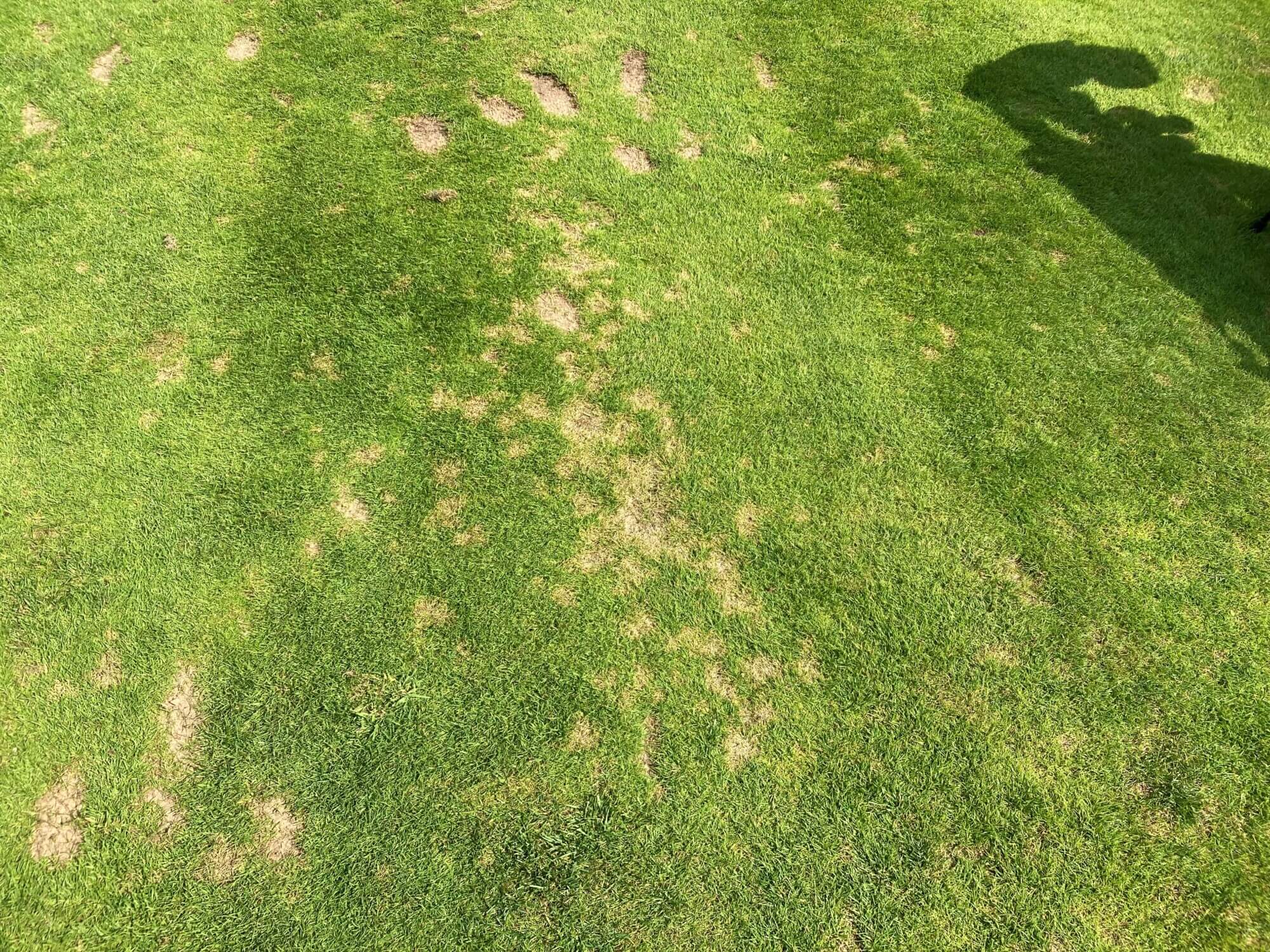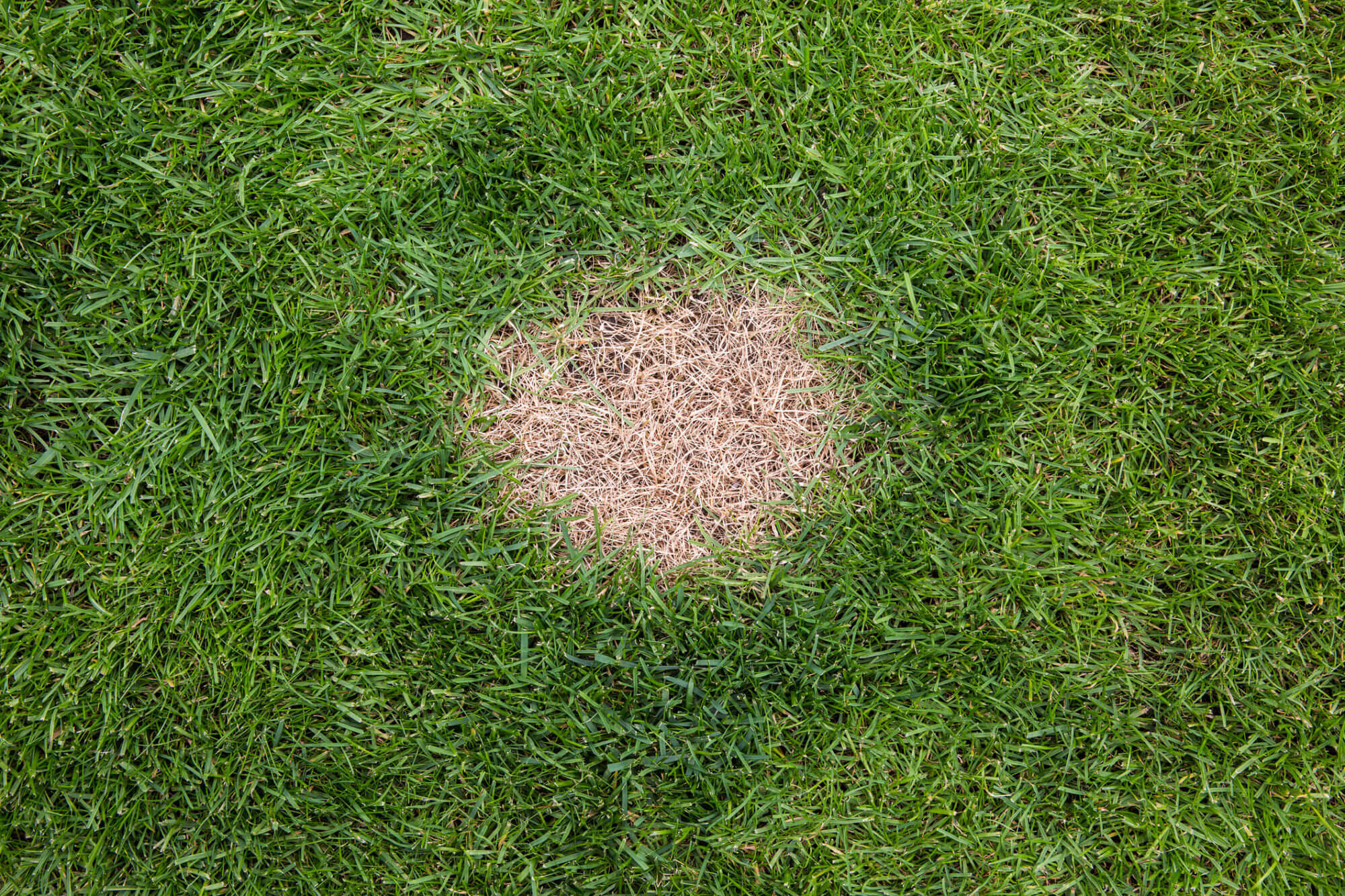What are these patches on my lawn?
A healthy lawn is often seen as a hallmark of homeownership, playing a crucial role in both curb appeal and environmental balance. However, the appearance of unusual patches can evoke concern and confusion among homeowners. Understanding these patches is key to restoring your lawn’s beauty and vitality.
Various factors contribute to the unsightly patches on a lawn, ranging from diseases and pests to environmental stresses. Specifically, issues such as Red Thread Disease, Fusarium Patch, and Dollar Spot can significantly impact your grass’s health. Additionally, phenomena like Urine Scorch may also lead to visible lawn damage, each requiring different management strategies.
This article aims to explore the common causes of lawn patches, providing a detailed overview of their identification, causes, and effective treatment or prevention methods. By arming yourself with this knowledge, you can take the necessary steps to ensure a thriving and attractive lawn.
The likely causes of patches on your lawn…..
Red Thread Disease
Red Thread Disease is a common fungal disease that presents as small, red threads protruding from the affected grass blades. A telltale sign is the reddish-pink mycelium that becomes visible on the lawn during humid weather or periods of prolonged wetness. It typically affects lawns that are deficient in nitrogen – a vital nutrient promoting the green and vigorous growth of grass. Lawns with poor drainage or that are frequently over-watered are also susceptible to this condition. Red Thread Disease is often an indicator that the lawn requires more focused nutritional management.
Identifying Red Thread
To accurately identify Red Thread Disease, look for irregular patches of pink or reddish discoloration on the grass. The patches can range in size but often appear scattered across the lawn in no discernible pattern. Upon closer inspection of these patches, one may notice the characteristic red or pink threads extending from the tips of the affected grass blades. These threads are the spore-producing structures of the fungus and are most visible when the grass is wet.
An additional sign of Red Thread is the discoloration of the leaf sheath and blades, which take on a bleached appearance. While the disease can look severe, it’s typically the aesthetic impact rather than long-term damage to the turf that concerns lawn owners. Diagnosing Red Thread early can lead to more effective management and quicker recovery of the lawn’s appearance.

Red Thread Disease
Causes of Red Thread
A primary factor contributing to the onset of Red Thread Disease is a nitrogen-deficient soil environment. Lawns lacking adequate nutrition are more vulnerable to fungal diseases, with Red Thread capitalising on such deficiencies. Other contributing factors include:
- Prolonged periods of leaf wetness, which may result from overwatering, poor drainage, or extended periods of rainfall.
- High humidity coupled with moderate temperatures typically between 15°C and 24°C (60°F and 75°F).
- Poor air circulation around grass plants, which could be exacerbated by a thick thatch layer or overgrown surrounding vegetation.
- Specific grass types that display more susceptibility to the disease, including fine fescues and perennial ryegrass.
Understanding these causes is crucial for effective management of Red Thread and for maintaining lawn vigour and appearance.
How to Treat or Prevent Red Thread
Prevention and treatment of Red Thread Disease hinge upon cultural practices that encourage healthy grass growth and reduce environmental conditions favourable to the fungus. The following are pivotal steps to mitigate the influence of Red Thread:
- Fertilisation: Apply appropriate nitrogen-rich fertilisers to address nutrient deficiencies.
- Irrigation: Water lawns deeply but infrequently to minimize leaf wetness duration and encourage deep rooting.
- Aeration: Perform regular lawn aeration to improve soil structure and reduce compaction to enhance water infiltration and air circulation.
- Thatch Management: Maintain a minimal thatch layer to ensure proper airflow and reduce fungal habitat.
- Mowing: Keep lawn mowers maintained with sharp blades; mow at the recommended height for the grass type to reduce stress on the grass plants.
Continuously monitoring the lawn for the early signs of Red Thread and employing these preventive measures can ensure a thriving, attractive turf throughout the growing season.
Fusarium Patch
Fusarium Patch, also known as Microdochium Patch, is a fungal condition that can ravage a lawn, especially during cool, wet conditions, typically in late autumn or winter when the temperature remains just above freezing. The disease appears as small, circular patches of dead or dying grass that can expand and merge, creating large areas of damage. These patches can have a pinkish or orange hue due to the presence of fungal spores. Management strategies to diminish the impact of Fusarium Patch include maintaining proper air circulation, avoiding excessive nitrogen applications in the fall, and removing any thatch layer that hinders healthy grass growth.
Identifying Fusarium Patch
The diagnosis of Fusarium Patch begins with a careful examination of the grass plants. Initially, small, circular, brown spots may be noticed, which can expand over time, reaching several inches in diameter. These spots may merge to form larger brown patches of dead grass. A unique hallmark of Fusarium Patch is the pink or salmon-coloured mycelium that is often visible around the edges of the patch, especially during humid weather or when dew is present on the grass. Sometimes, a white, cottony mycelium can also be seen. These symptoms are especially observable during periods of cool and wet weather in autumn and spring.

Fusarium Disease in Turf
Causes of Fusarium Patch
Several factors contribute to the development of Fusarium Patch. Prominent among these is prolonged leaf wetness, which creates a conducive environment for fungal spores to germinate and infect grass blades. Variable temperatures coupled with high humidity can accelerate the spread of the disease. Additionally, a thick thatch layer and soil compaction can exacerbate the condition by impeding proper drainage and air circulation. Grass varieties have different susceptibilities, with certain cool-season grasses being more prone to developing Fusarium Patch.
How to treat or prevent Fusarium Patch
Preventing Fusarium Patch necessitates an integrated approach that encompasses cultural and chemical management strategies. Here is a succinct outline of the core practices:
- Balanced Fertilisation: Avoid excessive nitrogen, which can make grass more prone to disease.
- Proper Irrigation: Water deeply but infrequently to promote strong roots and avoid prolonged leaf moisture.
- Thatch Management: Regularly dethatch to maintain a thin thatch layer, which reduces fungal habitat.
- Soil Aeration: Aerate the lawn to relieve soil compaction, improving root growth and drainage.
- Grass Selection: Choose more resistant grass varieties when overseeding or establishing new lawns.
- Fungicide Application: Apply fungicides with care as per recommendations, especially during vulnerable periods. This is however limited only to professional users, such as Greenkeepers and Groundsmen.
Employing these strategies diligently can not only address existing Fusarium Patch problems but can also help prevent future occurrences, thereby ensuring the maintenance of a healthy lawn.
Dollar Spot
Dollar Spot refers to a fungal disease identifiable by small, round, straw-colored spots on lawns that are roughly the size of a silver dollar. It can significantly mar the appearance of an otherwise healthy lawn when numerous spots coalesce. Dollar Spot is most prevalent during periods of high humidity paired with warm days and cool nights. It affects a wide range of grass types and is exacerbated by low levels of nitrogen in the soil. To prevent this disease, consistently apply balanced fertilisation, ensure adequate soil moisture without over-watering and improve airflow to reduce humidity.
Identifying Dollar Spot
The identification of dollar spot involves close examination of the grass blades. Look for distinct hourglass-shaped lesions and pay attention to the coloration, size, and pattern of the spots. Individual spots are about 1 to 2 inches in diameter, but coalesce they can damage a significantly larger area. Early in the morning, you might also notice a cobweb-like mycelium, which is a type of fungal growth, on the grass blades. This confirms the presence of dollar spot, especially during humid weather or when the grass is covered with dew.

Dollar Spot on a golf course tee box
Causes of Dollar Spot
Dollar spot is primarily caused by the fungus Sclerotinia homoeocarpa. Conditions that favor the development of this fungal disease include:
- Prolonged periods of high humidity or wetness on grass leaves
- Low nitrogen levels, which reduce grass vigor and resistance
- Excessive thatch build-up that holds moisture and fungal spores
- Incorrect mowing heights that stress the grass plants
- Environmental stressors, such as compacted soil, which impede healthy grass root development
- Temperatures from 60°F to 85°F with nights that are cool and moist
How to treat or prevent Dollar Sport
Treatment for dollar spot involves both cultural practices and chemical applications to promote a healthy lawn and eradicate fungal spores.
Cultural Practices:
- Balanced Fertilisation: To boost grass health without promoting disease, apply fertilisers with balanced nitrogen levels.
- Watering: Ensure proper irrigation with deep watering to reduce leaf wetness duration.
- Mowing: Mow at recommended heights to avoid stressing grass plants and remove clippings if the disease is active to reduce spreading.
Chemical Treatments:
- Fungicides: Employ fungicides registered for dollar spot control. It’s important to rotate fungicide classes to avoid resistance. These are only available to professional users.
Preventive measures for maintaining a healthy lawn also include planting resistant grass seed varieties and minimizing thatch build-up through regular dethatching. In instances where dollar spot persists, professional lawn care services should be consulted to implement a specialised treatment plan.
Urine Scorch
Urine Scorch is caused by the high concentration of urea found in pet urine, which acts like an overdose of nitrogen fertiliser, burning the grass roots and causing yellow or brown spots. These urine burns often display a green fringe around the brown spots due to the surrounding grass receiving lower urea concentrations, stimulating growth. Preventing urine scorch can be as simple as watering the area where the pet has urinated to dilute the urea concentration or training the pet to use non-grass areas for elimination.
Identifying Urine Scorch
Urine Scorch can be recognised by several unmistakable features. It usually appears as small, roughly circular, brown or dead patches on the lawn. These patches often have a characteristic dark green border, a byproduct of the nitrogen found in pet urine, which at lower concentrations can act as a fertiliser, causing the grass to grow rapidly and take on a deeper hue. Larger patches may develop if the pet frequently visits the same spot. To differentiate this condition from similar looking diseases like Dollar Spot or brown patch fungus, note that Urine Scorch tends to be more isolated to places where pets relieve themselves.

Dog urine scorch
Causes of Urine Scorch
Urine Scorch is primarily caused by the nitrogen content in pet urine. This nitrogen, when deposited in high concentrations, is akin to over-fertilisation and can “burn” the grass roots, leading to dead patches. Other contributing factors include the acidity or pH of the urine, along with the grass type; some species are more resistant to urine burns than others. Furthermore, the susceptibility of the lawn to Urine Scorch can be exacerbated by dry weather, which reduces the grass’s ability to dilute and absorb the nutrients in the pet urine effectively.
How to treat or prevent Urine Scorch
To combat Urine Scorch, homeowners can take several steps. Here is a preventive and treatment strategy as a guideline:
|
Preventive Strategy |
Description |
|
Designated Pet Area |
Train pets to use a specific area of the yard, preferably with materials that can withstand urine. |
|
Lawn Hydration |
Water spots where pets urinate to dilute urine immediately. |
In cases where Urine Scorch has already occurred, homeowners can rake out the dead grass and apply a combination of water and grass seed to the affected area to encourage regrowth. Proper and timely lawn care practices are essential for maintaining a green and lush lawn. It is important to note that if these measures are ineffective or if the homeowner is unsure about the exact nature of the lawn issue, consulting a professional lawn care company is advisable.